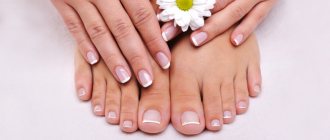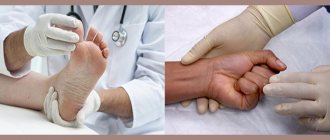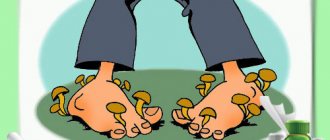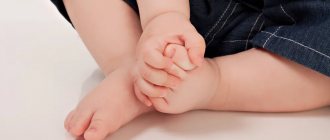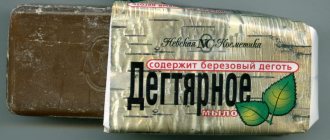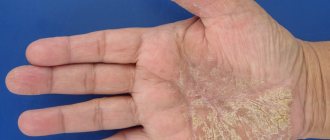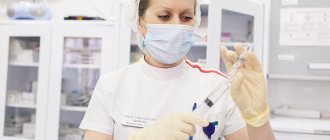The incidence of fungal nail infections is very high. According to a summary analysis of epidemiological studies in different countries, this is 5.5% of the total population. Risk factors include: diabetes mellitus, various immunosuppressive conditions, obesity, smoking, old age, certain professions, genetic predisposition, and hygiene defects. The spectrum of pathogens varies from country to country depending on the length of the season for wearing closed shoes. Countries with temperate and cold climates have a higher prevalence of dermatophytosis, while hot tropical countries have a higher prevalence of yeast infections (1). In general, mycosis of the nails is a chronic condition, the rate of progression of which is influenced by the health status of the patient's macroorganism.
People are designed in such a way that they begin to deal with problems when they see their importance and relevance, so with the question “How can I get my nails in order?” May be used more often in spring and summer. And with regard to damage to fingernails - all year round, taking into account the prevalence of long-term decorative nail coatings. In the era of gel polish, alas, this has become a significant problem, since technologically active chemical and thermal trauma to the nail plates occurs, and detachments of the nail from the bed are often formed, in which a variety of microflora find shelter (2).
Onychomycosis, dystrophic change in the nail after chemical and thermal trauma with repeated application of gel polish
All photos provided by the author of the publication
Chemical and thermal burn of nails after applying gel polish. Dark stripes are linear hemorrhages. Marginal bacterial-fungal process.
Rapid development of pseudomonas lesions of the nail after detachment of the nail plate against the background of chemical and thermal burns when applying gel polish.
The pharmacy range of antifungal agents is very wide - from external over-the-counter drugs to systemic antimycotics, of which only fluconazole at a dosage of 150 mg for the treatment of vulvovaginal candidiasis is available over-the-counter. Let's look at the issues that the first table often has to resolve.
Is it a good thing or a disservice to dispense a product without a prescription or doctor’s prescription?
Definitely a disservice. As a specialist, I understand that despite the obvious clinical picture, it is necessary to laboratory prove the presence of the fungus. According to world statistics, onychomycosis is the cause of nail changes in 50% of cases, in 15% it is caused by metabolic disorders and inflammatory conditions, in 5% of cases neoplasms in the area of the nail plate and pigmentary disorders are to blame.
For example, up to 40% of patients with psoriasis without joint damage have some kind of nail changes, and even more with joint damage. Among patients with contact eczema of the hands, changes in the nail apparatus are observed in 80%. Thus, what appears to be a fungal infection of the nail plate may be a manifestation of a completely different pathology. In the pharmacy, it is important to correctly set the route for the patient so that there is no residue left from ineffective treatment. After all, they will remember the pharmacist who sold the ineffective product, and not the fact that he strongly recommended visiting a dermatologist.
“Sandy nails”, dystrophic changes in the nails, and mycosis were excluded in the laboratory.
Nail psoriasis. Upon examination, mold flora was found. Such nail plates are especially attractive for colonization by various microflora.
Lichen planus of the nails, mold flora was found, but is not the main factor of pathological changes.
Lichen planus of the nails, fungi can be secondary, unfortunately, long-term inflammatory processes at the base of the nail affect the growth zone and nail restoration is difficult.
Getting tested for onychomycosis - how long will it take?
The fastest method for diagnosing mycosis is microscopy of skin flakes and pieces of nails, which must be correctly and in sufficient quantities taken from the lesion. After exposure to concentrated alkali, the keratin of the nail plate brightens, and the laboratory assistant describes what he saw. What I'm most looking forward to are the words - mycelium threads, although the abundance of spores is also an important diagnostic criterion. The result is usually ready in 3-5 days, but the doctor can prescribe therapy at the first appointment, which will either be approved or adjusted based on the results of microscopy. The material can also be taken for sowing, which takes up to 30 days to prepare and, due to the fact that mushrooms are quite capricious during cultivation, often gives a false negative result. It is also very important for us, dermatologists, that the patient comes to the scraping “naive”, and not freely using over-the-counter medications. After all, self-medication will increase the likelihood of a false negative test result.
How long should treatment last?
In cases of treatment of onychomycosis of the lower extremities, the general course of therapy often extends to 9-14 months, since toenails grow extremely slowly - 1 mm per month, and our goal is a complete change of the nail plate with constant exposure to antimycotics. Therefore, for me, as a dermatovenerologist, it is fundamentally important to confirm the diagnosis not by eye. After all, if there was no scraping, and the person decided to undergo treatment himself for aesthetic reasons, then after only 3-4 months of treatment, anyone can think: “was there mycosis?”, or maybe “I just crushed my nail” and abandon regular therapy.
I've run out of varnish, can I replace it with a cream with the same INN?
Great and relevant question! Drug developers and technologists are not trying in vain, and I have an unambiguous positive response to the variety of forms: solution, spray, gel, cream, ointment, varnish, powder, shampoo... Let's go through the differences in forms:
- solution - penetrates well into the internal structures of the nail plates, which means they get closer to the zone where the division of the fungus is most active
- spray - spreads well over the skin without making it greasy, can be used on areas with hair and replace the solution
- gel - also distributes well over the surface of the skin, can replace solution and spray, especially when a change in the active substance is necessary
- cream - a fairly universal form of release - moisturizes, softens dry areas, but penetrates worse than the solution into hard-to-reach, but fungi-infested nail cavities
- ointment - a fatty form for processes where it is necessary to soften layers and crusts. Ointment and cream are often replaced with each other, but this is not always adequate - ointment is not suitable for everyone
- varnishes are easy to use, but, in my opinion, their effect is devalued by the wrong choice of target group for therapy: varnishes are good to use for the prevention and treatment of superficial and initial forms of nail fungus, and not advanced ones, with which they most often run to the pharmacy
- powder is a valuable form for the prevention of relapses of mycoses of skin folds, including interdigital spaces
- Shampoo is indispensable for treating scalp lesions.
All these forms are very necessary in the portfolio of prescriptions, and there is even some shortage, since some INNs have a meager line-up. I only want the attending doctor to evaluate everything and prescribe what is needed, guided by research, expert opinion and common sense.
Onychomycosis of the feet requires combination therapy. Varnish with an antimycotic in this case is not the drug of choice.
Why is it important not to make analog substitutions (INN from the same group)?
Fortunately, we have moved away from the omnipotence of the “three pillars” of mycology of the 19th and early 20th centuries - iodine, sulfur and tar. Some modern drugs are used once a day, and some 2-3, and this already significantly affects the patient’s adherence to therapy. Of course, 1 is better than 3, but the doctor could also count on the softening effect of the cream base, for example, when the nail bed is dry. It is unacceptable to replace the recommended drug with combination drugs with corticosteroids, for example, “Candide” and “Candide B” - these are fundamentally different drugs, and replacement is impossible. You should not replace the antimycotic with iodine tincture or other third-party agents. Yes, yes, this also sometimes happens in pharmacies according to patients.
The combination of psoriasis and mycosis, therapy should be very balanced, the use of terbinafine orally can significantly aggravate the course of psoriasis.
How do dermatologists feel about nail scrapers? Is their use useful, pointless or dangerous?
If the scraper is plastic and is used on damaged nail plates, previously softened with urea compounds, then there will be benefit - reducing the thickness of the nail affected by the fungus opens up more opportunities for external antimycotics to reach the area where the fungus is actively dividing. If the scrapers are metal, I am against it, because the risk of causing significant damage on your own (injury to the side ridges, nail bed) is quite high, and then there is a high probability of becoming a patient of the surgeon. Diabetics and people with vascular insufficiency especially need to be on their guard.
What related products are appropriate to offer to a client who purchases drugs for the treatment of onychomycosis?
It is absolutely appropriate to offer high-quality shoe dryers, mentioning that drying them from the inside for several hours is much more effective than using radiators and heated floors. Also, do not forget to offer Mycostop hygiene spray for shoes with an antifungal effect to prevent relapse. To be honest, as a doctor, I would really like manufacturers to expand their portfolio of such products. Industrial pharmacies may offer extemporaneous 1% chlorhexidine solution. If fingernails are affected by fungi, it is important to disinfect gloves and mittens with the above-mentioned products, since spores may remain inside them. Customers may also be interested in products for disinfecting bathtubs, bathroom floors, and products that can be used to safely and effectively wash slippers, socks, bathroom and bedroom rugs.
What is important to warn the buyer of topical drugs about?
- It is necessary to start therapy after consulting a doctor
- It is important to follow the instructions and not overdo it with medications
- If you experience itching, burning or weeping of the skin when applying topical products, stop use and consult a doctor.
- The approach must be comprehensive. Local forms will not always be effective enough. For example, by treating nails only topically, patients neglect the treatment of the smooth skin of the feet and hands, but this is where the reservoir of the fungus often remains and subsequent re-infection occurs - from the skin of the nail ridges and interdigital spaces. It is important to focus the patient’s attention on the fact that combination treatment increases effectiveness. Such treatment includes: the use of systemic and local forms of antifungals, removal of nail masses modified by fungus with special pastes with urea in a high percentage (pharmacies have special mycological kits) or at an appointment with a special pedicure specialist
- It is a mistake to use varnishes in cases of total nail damage. A simple analogy that I give at the reception is like trying to fix a basement through the attic.
- It is imperative to use shoe treatment products to prevent relapses.
- Examination and treatment of loved ones with whom there are close household contacts, because the infection will return again and again.
Onychomycosis of the feet, traumatic chronic injury to the nail in shoes. Combination therapy is required - external and systemic, hardware pedicure or softening pastes.
Traumatic damage to the nail plate in shoes with tight toes while wearing gel polish. Reducing the area of growth of the nail to the nail bed. Areas of onycholysis are populated by bacterial (Pseudomonas aeruginosa) and yeast microflora.
What is important to warn the buyer of systemic drugs about?
Of course, that systemic medications are taken in accordance with the instructions and are not intended for self-medication. About the importance of restrictions on alcohol intake, about checking compatibility with all those medications that a person is already using. For example, terbinafine tablets can be metabolized through the same liver isoenzymes as tricyclic antidepressants, serotonin reuptake inhibitors, beta-blockers, and antiarrhythmic drugs, which requires caution when prescribing. The combined use of terbinafine with warfarin reduces the prothrombin time, which means the risk of thrombosis increases. When taken simultaneously with caffeine, the concentration of the latter increases by 19% due to a decrease in clearance.
Rifamipicin, used in phthisiology, can significantly reduce the effectiveness of antimycotic therapy with terbinafine and itraconazole. Itraconazole has a wide list of drug interactions, and there is room for expert pharmaceutical advice.
All medications that reduce gastric acidity, from antacids to proton pump inhibitors, can reduce the absorption of itraconazole, so the recommendations include a note in these cases to take the drug with cola.
Is it necessary to offer hepatoprotectors to patients using systemic antimycotics?
You should not do this yourself, since many older patients are already taking a whole range of drugs, and against the background of polypharmacy, it can be difficult to include both a systemic antimycotic and a hepatoprotector. According to clinical recommendations, the prescription of a systemic antimycotic is done after biochemical control at the start of treatment in the absence of contraindications. If there are changes, then a treatment plan is drawn up together with the therapist, keeping in mind the golden truth that the consequences of treatment should not be more severe than the disease itself.
In conclusion, I would like to thank the employees of pharmacy organizations for their joint work for the benefit of patients, for their desire to expand knowledge and significant educational work on the importance of treatment and prevention of onychomycosis.
We answer questions live on VKontakte: https://vk.com/pharmznanie
You can discuss the latest news with all your Russian colleagues in chats:
- Telegram: https://tglink.ru/pharmorden
- VKontakte: https://vk.me/join/AJQ1d_D2XxaDy9IdzL0e6EqH
To leave a comment on this article, you need to register or log in
- Gupta AK, Versteeg SG, Shear NH. Onychomycosis in the 21st Century: An Update on Diagnosis, Epidemiology, and Treatment. J Cutan Med Surg. 2017;21(6):525-539.
- Rieder EA, Tosti A. Cosmetically Induced Disorders of the Nail with Update on Contemporary Nail Manicures. J Clin Aesthet Dermatol. 2016;9(4):39-44.
Interested in the article? You can find out even more in the Expert Opinions section
Symptoms of fungus
The course and development of the disease is influenced by the physiological characteristics of the skin of the feet, increased sweat production, disturbances in the functioning of the endocrine system, and leg injuries. Fungal pathogens can remain dormant for a long time without showing symptoms. If there are disturbances in the body, they can become active. Athlete's foot is characterized by the presence of several forms of the disease, which can be supplemented by damage to the nail plates.
Fungal infection can be determined if several symptoms are present:
- the nail plate changes its natural color: usually yellow or dark color is fixed, but the nails can even become white or completely black;
- tissue keratosis under the plate: outwardly it looks as if a hard growth has appeared under the nail;
- thickening and delamination of the plate;
- deformation of the nail: protrusion, growth to the side, ingrowth into the skin;
- fragility of the nail plate: parts of it may break off.
Useful tips from the doctor
Prevention of nail fungus or how to avoid getting a fungal infection
- Have individual accessories: shoes, slippers, washcloth, pumice stone, foot towel and manicure set.
- After use, wash the bathtub and shower cabin with powder (chlorine) and a cloth.
- Nail scissors are disinfected by immersing them in alcohol and then burning them over a burner flame.
- After contact with surfaces and objects potentially contaminated with fungus (beaches, baths, swimming pools, gyms, other people's shoes, sports equipment, etc.), it is recommended to treat your feet with a spray (for example, MIKOSTOP).
How does the disease progress?
The first manifestations of the disease begin in the spaces between the fingers, especially between 4 and 5, since there is the smallest distance between them. A slight itching begins, and over time a strip of thickened and slightly flaky cuticle appears on the finger fold.
After 2-3 days, a small crack forms, from which serous fluid is released, which acts as an excellent medium for the successful proliferation of the fungus. The tough layer of epidermis may fall away, revealing a dark pink area underneath. The progression of the disease leads to its spread over all the toes and the adjacent side of the foot.
Through damaged areas of the upper part of the skin, the fungus can penetrate into the deeper layers behind the epidermis. The disease is accompanied by an eczematous reaction. Fluid-filled blisters form on the skin, which are very itchy. Over time, they can coalesce and erode, resulting in wet spots.
Reference! When studying skin affected by fungus, it was found that the “bare” wet surface that appears under the blisters does not contain the pathogens themselves, but is only a consequence of their activity.
Without proper timely treatment, the fungus affects the entire surface of the foot and toes, sometimes extending to the area above the heel. There is instability in the course - the disease either slows down or intensifies again.
Without treatment, the disease can drag on for many years. In this case, there is a high risk of complications from pathogenic streptococcus: the fluid in the blisters begins to fester, foci of inflammation spread beyond the initial boundaries, and the foot swells greatly. It becomes difficult for a person to move due to painful sensations in the legs. In addition, complications may arise in the form of problems with the lymph nodes.
The development of athlete's foot usually occurs in the summer months. At this time, sweating increases, fingers often become wet, and increased humidity in the interdigital areas creates favorable conditions for the introduction of fungus and its active reproduction.
Mycosis usually appears on the 1st and 5th fingers, spreading from the free side. The nail gradually thickens, acquires a yellowish tint and an uneven sharp edge. Over time, pronounced subungual hyperkeratosis of varying degrees appears.
Varnishes against fungus up to 1000 rubles
One of the most inexpensive antifungal varnishes in the top ranking is Demicten, the active component of which is formic acid aldehyde.
The product must be applied daily for a month, and in the future it can be used for prevention. The list of contraindications includes lactation and pregnancy, as well as hypersensitivity to individual components. Side effects such as redness and itching may occur. The cost of the product is from 230 rubles. Another available remedy against mycosis is Oflomil, produced on the basis of the active ingredient Amorolfine. The drug is effective against the following types of fungus:
- yeast;
- moldy;
- dimorphic;
- actinomycetes;
- dermatophytes.
It is best to use the product for moderate mycoses. Conveniently, you only need to apply it 1-2 times a week. The list of contraindications includes hypersensitivity to Amorolfine, lactation, pregnancy and infancy. Side effects include itching, redness, and burning of the skin surrounding the nail. Oflomil costs from 850 rubles.
Varnishes against mycosis are convenient to use at home.
No less popular is the fairly cheap Mikozan, which has a similar price to Oflomil and is its analogue, but is developed on the basis of various natural ingredients. Fights well against various types of fungus. One of the inconveniences is the need for frequent and long-term application (twice a day for four weeks). Contraindications are the same, including intolerance to the components. There are virtually no side effects.
Belvedere varnish has become a well-proven product due to its low price (from 160 rubles). The composition of the drug includes:
- coral extracts;
- silicon;
- keratin;
- vitamins.
Due to its natural and not very diverse composition, the product is not very effective and is most often recommended for the prevention of relapses of mycosis. The drug does not cause any side effects, but it should be used with caution during pregnancy and lactation, following the accompanying instructions. As directed by a doctor, it can be used as an additional remedy in conjunction with stronger drugs.
Before using any anti-fungal varnish, apply a small amount of the product to the nail and observe the reaction to avoid possible allergies.
An inexpensive gel polish (from 900 rubles) with a noticeable effect is Oflomelid, which copes with mycoses caused by any type of fungus. The product is applied to the nail only 1-2 times a week until complete recovery. Apart from pregnancy and lactation, there are no contraindications. However, various side effects may occur from the use of Oflomelid, including burning of the skin around the nail, discoloration of the nail plate, and others.
Treatment of foot fungus
For successful therapy, you need to pay a lot of attention to the treatment of lesions.
A person affected by fungus should take foot baths every day with potassium permanganate. It is necessary to get rid of the crusts, puncture the blisters and remove the “fringe” along the boundaries of the erosive areas and the covers of the festering blisters.
After the bath, you need to apply medicinal bandages soaked in an aqueous solution of copper sulfates (0.1%) and zinc (0.4%) or a 1% solution of resorcinol to the affected areas. After the weeping areas have begun to heal, dermozolon, mycozolon are used, and then alcohol solutions based on fungicide and fucorcin. If necessary, the kit is supplemented with fungicidal ointments.
Obtaining the desired result does not depend on the drugs used, but on the correct sequence of their use according to the current situation with inflammatory processes.
Additional treatment plays a huge role after the end of the fight against the lesions, because it helps prevent relapses. The skin of the feet is wiped with 2% salicylic alcohol or 1% thymol, and the use of 10% boron powder is also required. To get rid of and prevent the appearance of fungi in shoes, you need to wipe them from the inside with a formaldehyde solution, wrap them in thick fabric for a couple of days, and then dry them in the fresh air. For socks, tights and stockings everything is simpler - you just need to boil them in this solution for 10 minutes.
If a complication occurs with pyococci, then antibiotics are used - methicillin, cephaloridine and others. Bed rest is mandatory.
Consequences
This seemingly harmless disease can have very serious complications:
- damage to smooth skin and secondary infection;
- fungal sensitization with the formation of allergic reactions and foci of microbial eczema;
- complication of chronic dermatoses, varicose veins of the lower extremities and foot lesions in diabetes mellitus, etc.
It is impossible not to mention the epidemiological significance of existing foci of fungal infection: a sick person will infect public places and other people, and in everyday life will be a source of intra-family transmission of fungal infection.
Anti-fungal varnishes from 1000 rubles
A relatively expensive, but quite effective varnish is Loceryl based on the active ingredient Amorolfine. Copes well with extensive and chronic mycoses caused by any type of infection. The drug is applied twice a week until complete recovery. Side effects include mild burning and itching of the skin. Not recommended for use during pregnancy and lactation. The cost of the drug is from 1300 rubles.
Mycosis on toenails occurs much more often.
One of the most popular remedies against mycosis, judging by numerous reviews, is Lamisil varnish, developed on the basis of a substance such as Terbinafine. The drug is effective against dermatophytes, mold and yeast. Recommended for use in conjunction with tablets and ointments for mycosis. Apply twice a week until complete recovery. Not recommended for use during pregnancy or under 12 years of age. Side effects include mild redness and itching of the skin. Price – from 1300 rubles.
A good anti-inflammatory and preventive agent is a new product - Lorecil varnish, developed on the basis of Amorolfine. The treatment is applied to the nails 1-2 times a week and has special recommendations for use: it should be applied to previously washed and cleaned nails, additionally disinfected with an alcohol solution. However, the varnish takes quite a long time to dry, so after applying it you should wait a few minutes before starting to move. The course of treatment can last from 2-3 months to a year, depending on the intensity of the disease. Contraindications are the same as for other drugs. As for side effects, in addition to mild itching, they may include flaking of the skin. Price - from 1300 rubles.
To avoid fungus, careful hygiene must be observed.
Finally, Batrafen varnish is considered one of the most effective remedies, which fights 58 types of fungus that causes mycosis on the toenails and fingernails. The medicine is developed on the basis of Cyclopirox. It must be applied according to a special scheme: the first month the varnish is applied daily, the second - twice a week, and in the third month - only once a week. The duration of the course usually does not exceed six months. The drug can cause peeling, itching and hives, and is not recommended for pregnant women or children under 12 years of age. The cost of this new cosmetic product starts from 2,200 rubles.
Before using any of the products, you must consult a dermatologist.
